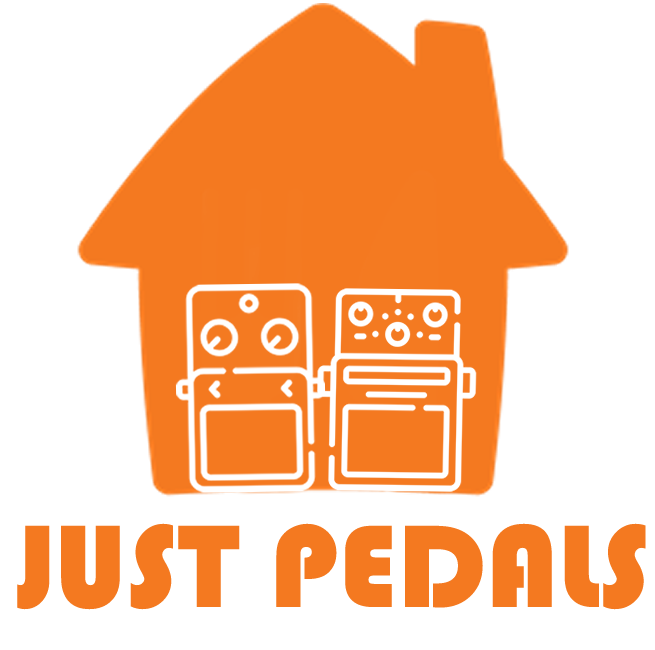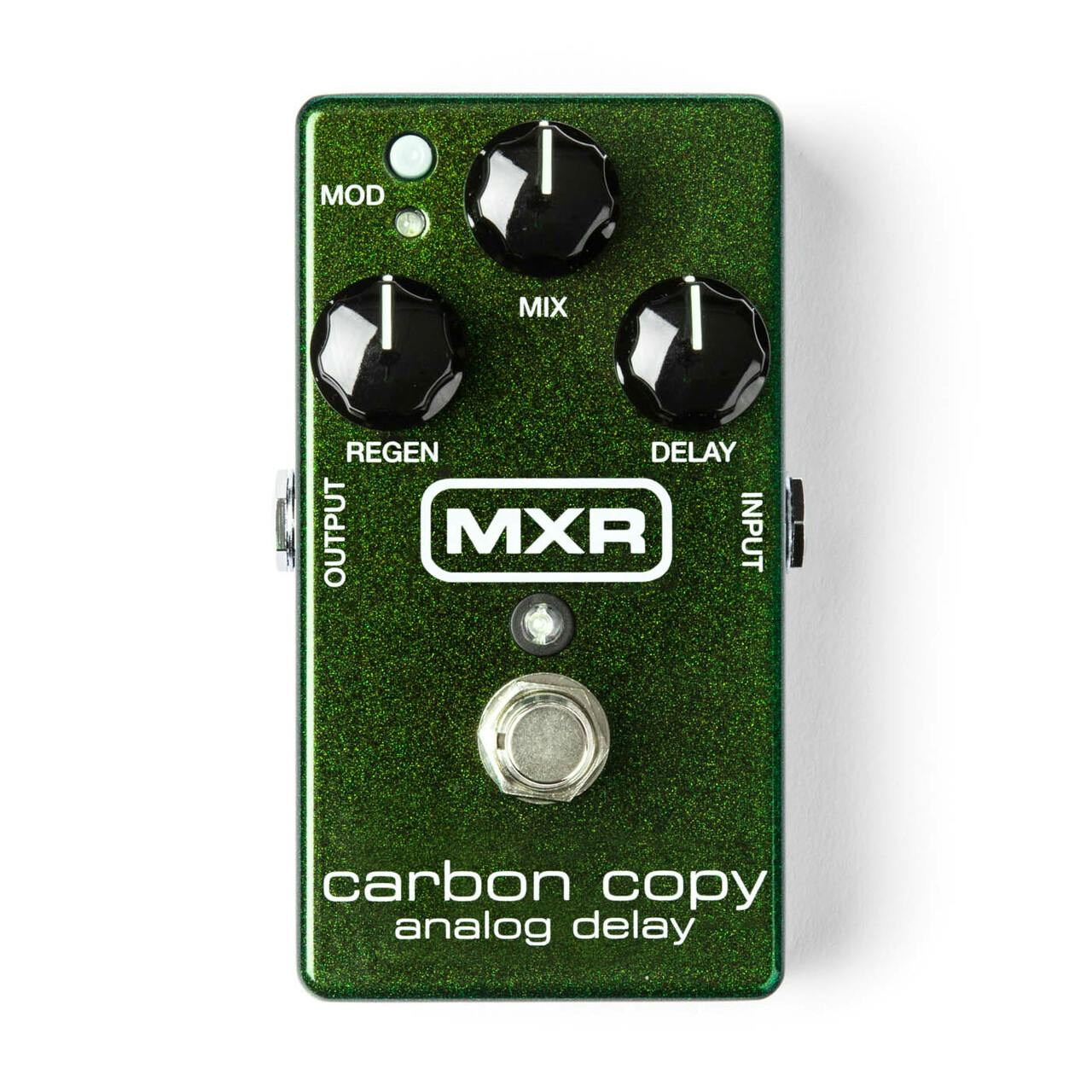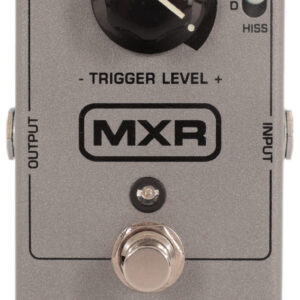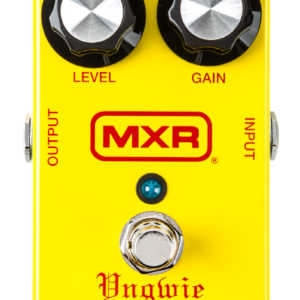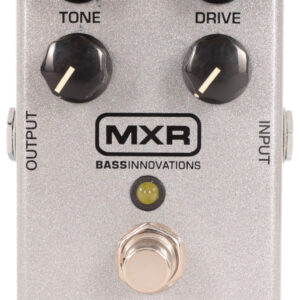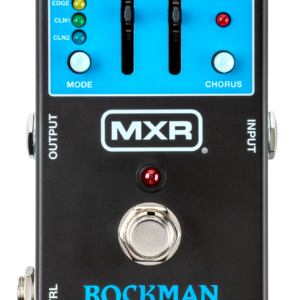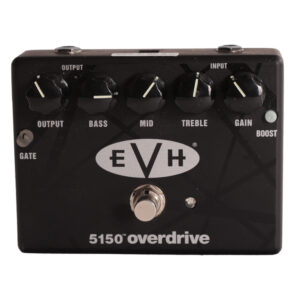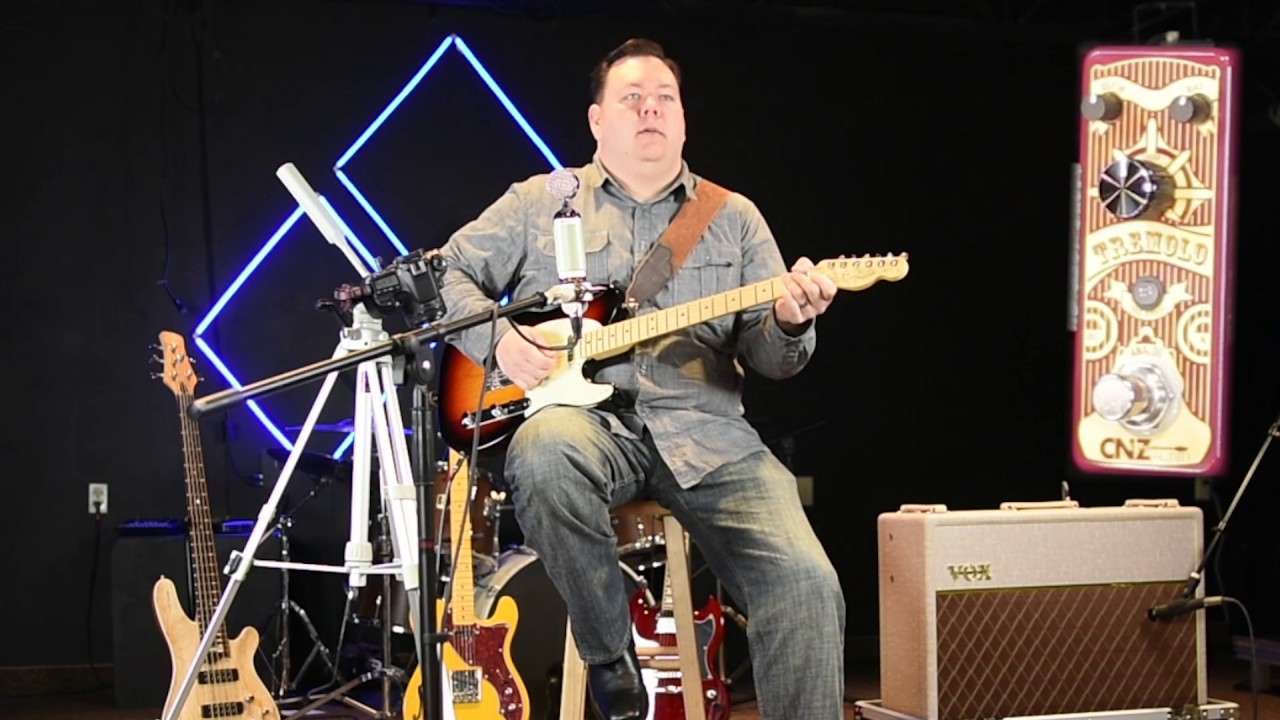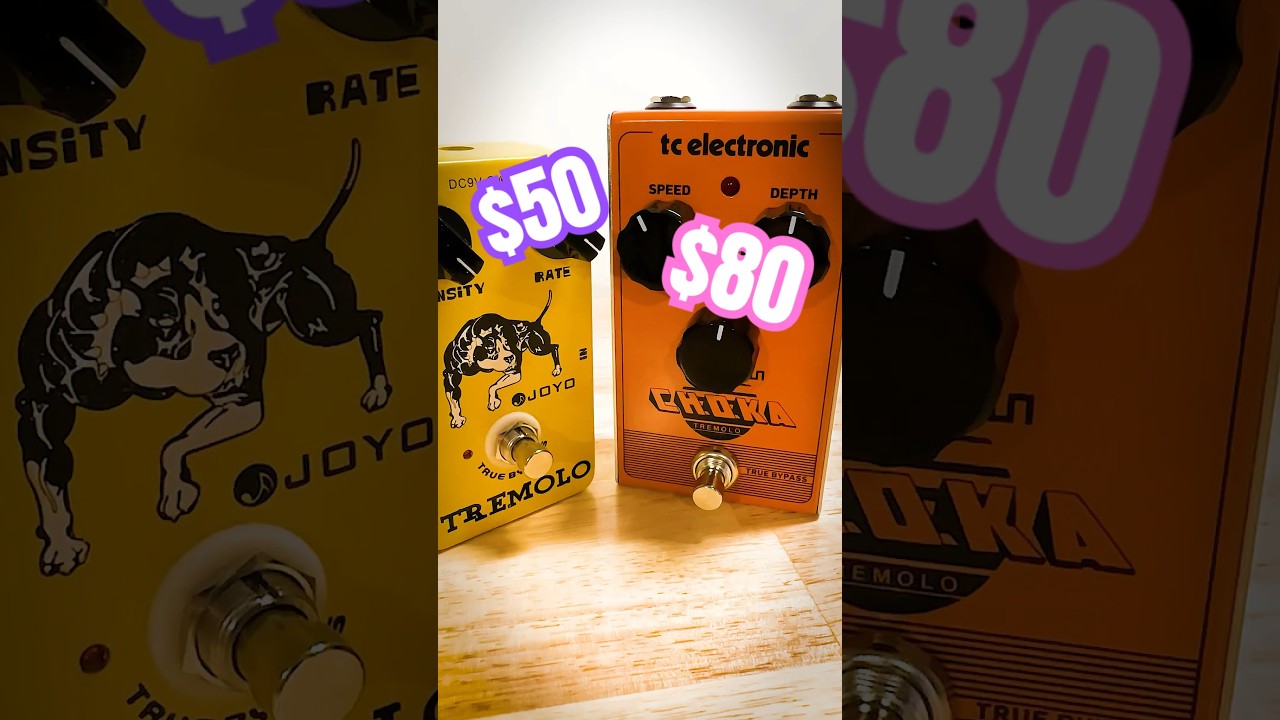Description
here at Just Pedals we love this MXR M169 Carbon Copy Analog Delay Pedal.
The MXR Carbon Copy Analog Delay features a completely analog audio path for the ultimate in rich, warm delay-made possible only by old-school bucket brigade technology. This design boasts an amazing 600ms of delay time with optional modulation via a top-mounted switch and a simple, three-knob layout that controls Delay time, Mix (dry/wet blend), and Regen (delay repeats)-all in a pedal no bigger than a Phase 90. In addition, two internal trim pots offer user-adjustable width and rate control of the modulation for even more tonal options. The Carbon Copy will take you from crisp “bathroom” slap echoes to epic, Gilmour-esque delays with a twist of a knob. True hardwire bypass, single 9-volt operation, and stage-ready blue LEDs round out the package. Available only from Dunlop Manufacturing, the world’s leader in analog pedal technology.
Features
- Analog audio path
- Extremely compact
- 600ms delay time
- Controls: Mod switch, Delay time, Mix, Regen
- True hardwire bypass
- 9-volt operation
- Blue LEDs
We have new and used MXR musical equipment available on our website for fast direct delivery from sellers across the UK & Europe.
MXR is a renowned American effects pedal brand, founded in 1972, that has earned a reputation for its reliable, high-quality products with a focus on simplicity and performance. Known for their iconic compact designs, MXR pedals have become staples on pedalboards across genres. Popular models like the Phase 90, Dyna Comp, and Distortion+ have been integral to the sounds of rock, punk, and beyond. With a commitment to durability and tone, MXR continues to innovate, offering a wide range of pedals, from overdrives and delays to modulation and loopers.
Analog effects pedals use traditional circuitry, typically built with transistors, capacitors, and resistors, to shape and modify a guitar’s signal without digital processing. Known for their warm, natural, and organic sound, analog pedals are favoured by many musicians for their rich harmonic response and smooth dynamic range. Unlike digital pedals, which process audio using algorithms, analog pedals maintain a continuous signal flow, preserving the instrument’s natural character.
Classic analog effects include overdrive, fuzz, phaser, chorus, and delay pedals, with legendary models like the Electro-Harmonix Big Muff, MXR Phase 90, and Boss DM-2 Delay standing the test of time. While digital pedals offer versatility and precision, analog pedals are prized for their warmth and simplicity, making them a staple in many guitarists’ pedalboards.
A delay pedal is used to create an echo effect by repeating the original sound after a short time. It works by capturing the input signal and then replaying it with adjustable delay time and feedback. The longer the delay time and the more feedback, the more pronounced the repeating echo becomes, adding depth and space to the sound.
There are different types of delay pedals, including analogue, digital, and tape delay. Analog delay provides a warmer, more natural echo, while digital delay offers clear, precise repeats and additional features like tap tempo. Tape delay mimics the sound of vintage tape machines, adding a distinctive, slightly warbled effect. Delay pedals are widely used across genres to create atmosphere, enhance solos, or add complexity to rhythms.
Just Pedals is a new Guitar Effect Pedals Marketplace – We feature new and used Guitar Effect pedals from different sellers, to purchase online from the UK.
A pedal is an electronic device that alters the sound of an electric guitar by applying various effects. Pedals are typically connected in a series between the guitar and amplifier, allowing guitarists to switch effects on and off with their feet while playing.
This enables musicians to quickly and easily change their sound, adding versatility and creativity to their performances.
Pedals are essential tools in many musical genres, including rock, blues, jazz, and metal, allowing artists to craft distinctive and dynamic soundscapes.
Once you buy one, you can’t stop and then you have to sell them and buy more.
Just the latest videos
Just related products
£147.44
Rich, all-analog delay Up to 600 milliseconds of delay time Modulation controls emulate tape echo tones Bucket-brigade technology Model Number: M169
£169.00
Number of items: 1.0 Package Weight: 180.0 grams Package Dimensions: 5.0 L x 10.0 H x 5.0 W (centimeters)
£181.26
The Carbon Copy Analog Delay delivers rich, warm bucket-bridgade delay with up to 600ms of delay time and modulation. Effortlessly dial in your desired delay settings with simple yet precise controls for Delay Time, Mix, and Regen (feedback). Achieve…
read more
£152.23
Mini Analog Delay Pedal with 600ms Delay Time Modulation Switch Bright Toggle Model Number: M299
£5.99
9v 500mA Regulated, 2.1mm x 5.5mm, Centre Negative Polarity Power Supply Filtered for Zero Hum, Noise Free Operation Spring Mounted Tip for Secure Connection 2 Meter Rounded Thick Cable. Energy Efficient Designed for Musical Equipment
